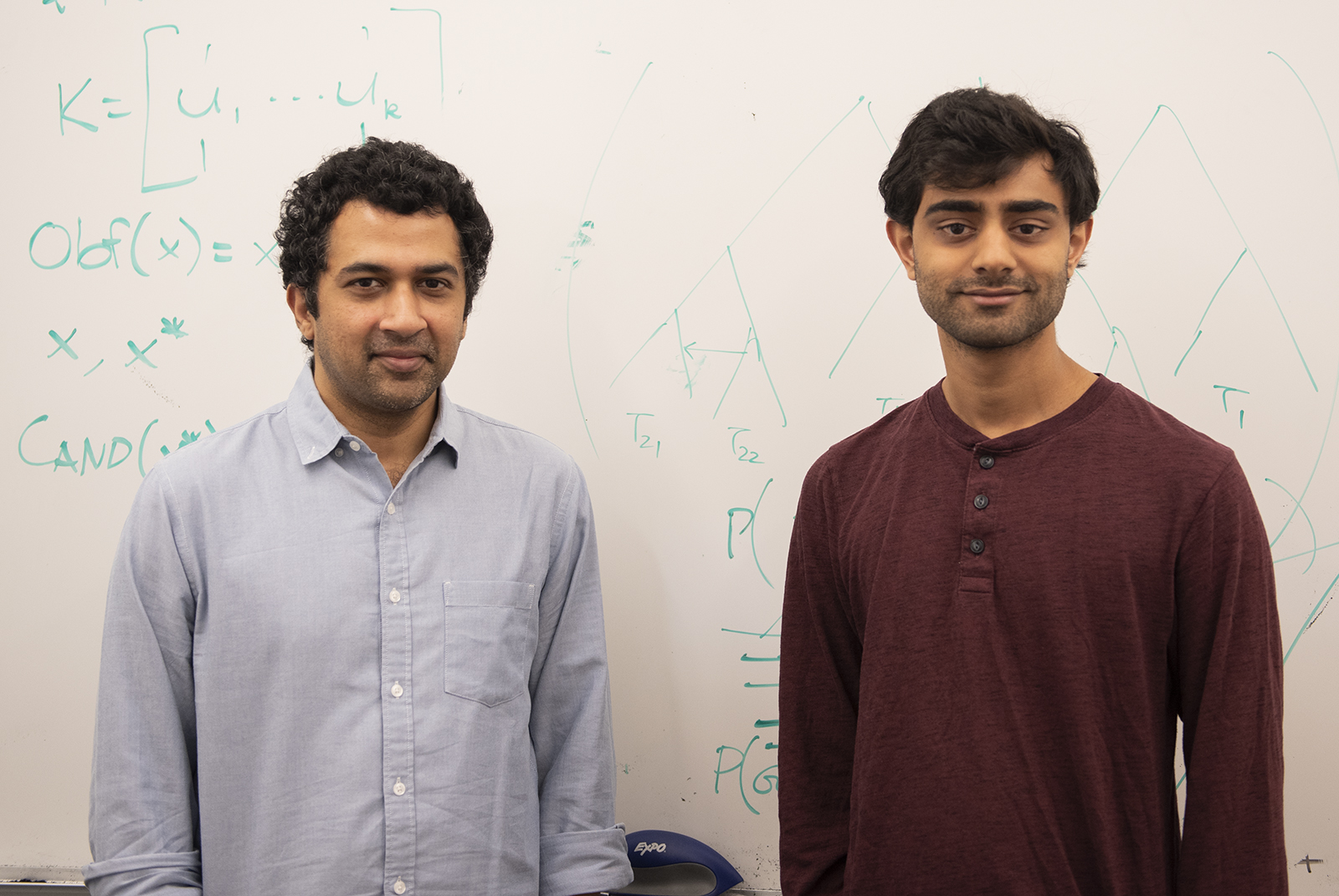Study uses genetic information to identify archaic ‘ghost population’

Sriram Sankararaman (left), an assistant professor, and Arun Durvasula, a human genetics graduate student, led a study that discovered evidence of a previously unknown population of ancient humans in West Africa. This group is referred to as a “ghost population” because it has a lack of fossil-based evidence. (Bernard Mendez/Daily Bruin)
By Eli Countryman
Feb. 25, 2020 11:00 p.m.
A UCLA study discovered evidence for a previously unknown population of ancient humans.
The study, which was published in the journal Science Advances on Feb. 12, identified an archaic West African “ghost population,” so named for the lack of fossil-based evidence. Researchers analyzed publicly available genetic information from the 1000 Genomes Project, which gathered genetic information on populations across the globe.
Sriram Sankararaman, a co-author on the study and an assistant professor in the Department of Human Genetics at UCLA, said the research team developed statistical methods and machine-learning systems to look at the genetic material of modern West Africans. Their research identified possible points of introgression – genetic transfers through interbreeding between humans and their archaic ancestors.
Sankararaman had traced parts of the human genome that come from known archaic species, such as Neanderthals and Denisovans, and wanted to expand his studies to other potential populations, said Arun Durvasula, a co-author on the study and a human genetics graduate student.
However, since there is no genetic information on other archaic humans, the researchers had to create novel ways of analyzing currently available data, he said.
“We came up with one statistical method that looked up the genomes of present-day Africans and compared it to the genome of the Neanderthal,” Sankararaman said.
The resulting data suggested archaic introgression might have taken place in Africa, he said. Researchers then began adding data to include introgressions between other known species, such as the Denisovan, to create a more cumulative model based on studies from the past decade.
This cumulative model was inconsistent with the real-world African genomic sequences, suggesting the existence of a ghost population, Sankararaman said.
Machines made the ultimate call on how closely the real-world data matched the expected frequency of mutations in the DNA, Durvasula said.
Using machine learning, the researchers fed information into a computer to teach it to identify and infer patterns in the genetic data, which then showed that the model and real-world genomes were different.
“If there’s no ghost introgression, the frequencies (of all mutations) are expected to be (about) equal,” Durvasula said.
In this case, however, some of the mutations occurred in higher or lower frequencies than the researchers expected, which is indicative of introgression.
The study indicates the presence of at least one archaic ghost population in modern Africans, Durvasula said, but they must conduct more studies before drawing conclusions about its presence in other populations.
Postdoctoral researcher Xinjun Zhang, who specializes in population genetics at UCLA, said populations have different rates of genetic mixture.
This happens because archaic species like Neanderthals and Denisovans interbred with humans along their migration path out of Africa, Zhang said. The study challenges earlier notions that modern Africans had little to no introgression, she said.
By using the methods developed, Sankararaman said researchers can now pinpoint exactly which parts of the modern human genome come from introgression.
“As we get better ways of taking our genome sequences and making inferences about the past, I think we might be able to discover additional populations that we have no idea existed except through the imprints they leave on our genome,” he said.
As a result of studies like Sankararaman and Durvasula’s, the story of human migration is likely more complex than previously thought, Zhang said.
“Before, population genetics studies assumed a really simple history model which is that from a population in Africa, people went out to different places,” she said.
However, new research indicates populations did not simply split off but also mixed together on numerous occasions, Sankararaman said.
The methods of analysis created during the study can also be applied to other situations, Zhang said. For example, modified models could be applied to nonhuman populations as well.
Sankararaman said the study does not prove the newly discovered population is the only instance of ghost introgression within the DNA of modern humans. Instead, he said it is likely that further studies may yield discoveries of other archaic humans.
The study focused particularly on African populations that had been analyzed the least, Durvasula said, but added that he hopes to soon apply their new statistical methods to other populations as well.
“We’re right now trying to get access to (the genomes of) other populations and seeing where else we can find this sort of thing,” Durvasula said. “I think there’s a lot out there. We just need to … go out and apply these methods.”

